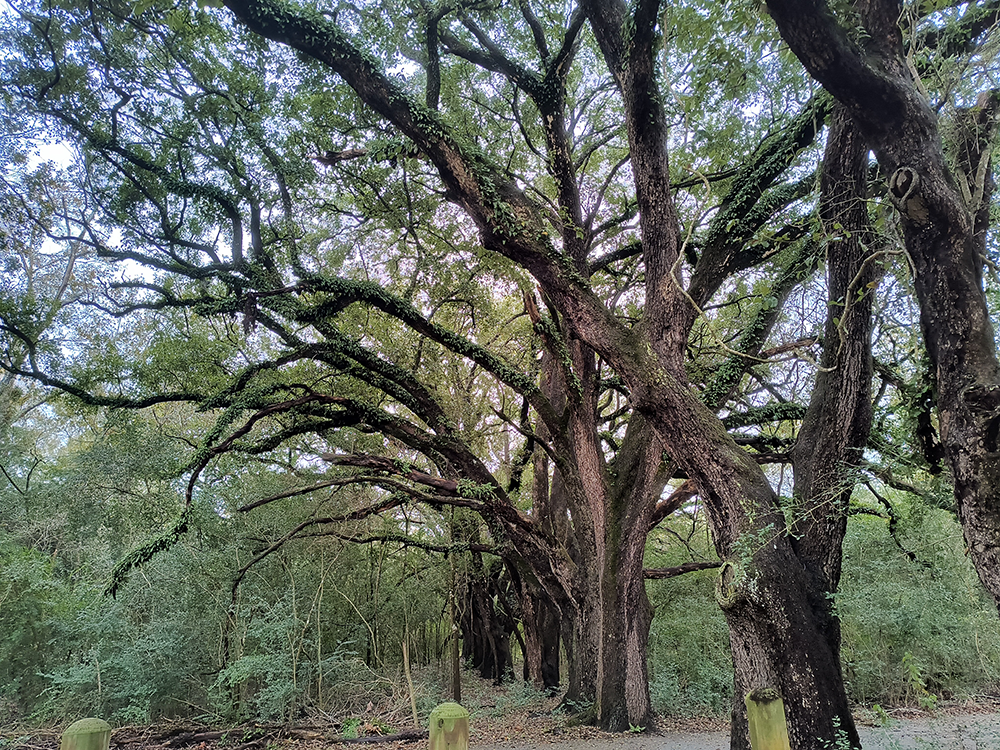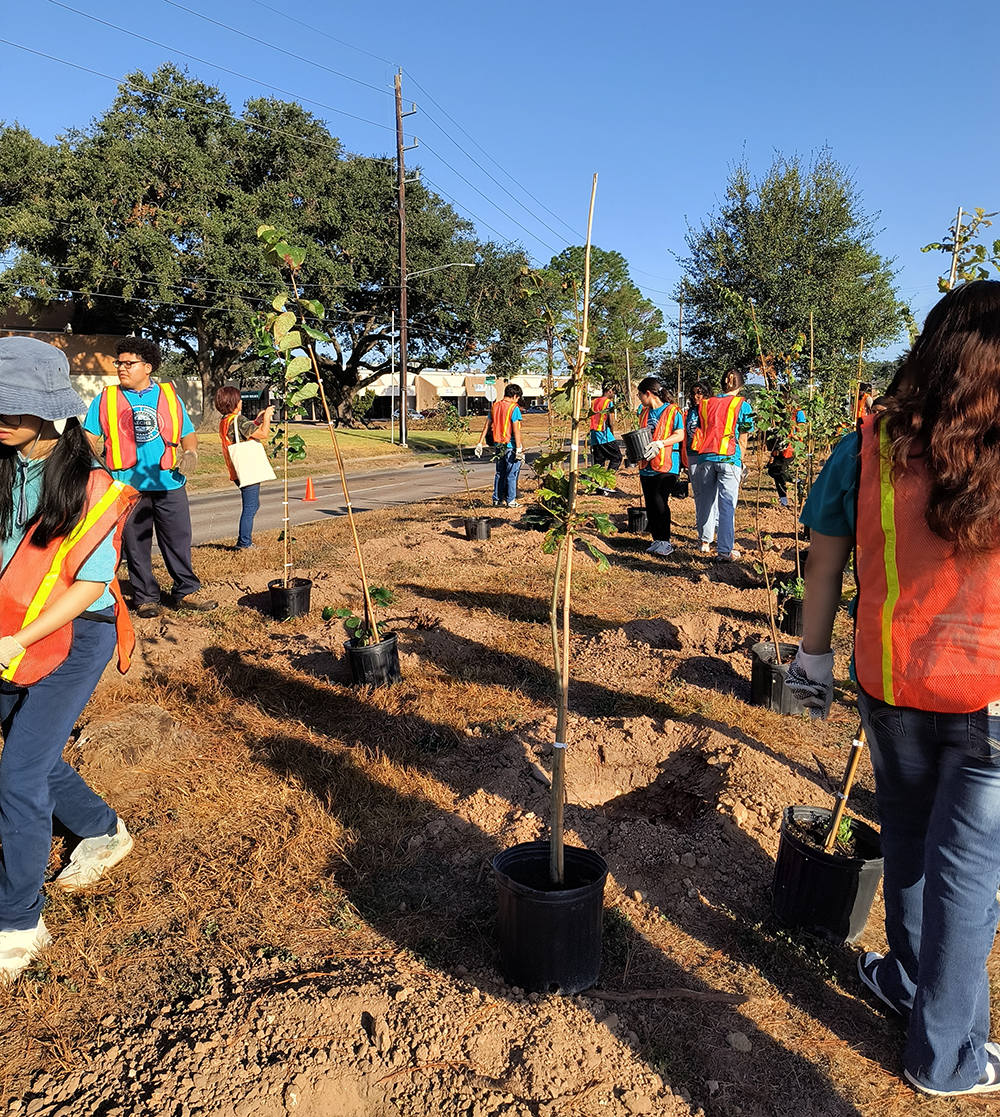
'Trees for Katy' Fosters Grassroots Tree-Planting Movement to Cool and Connect a Growing Community
In the unincorporated stretch between Katy and Houston, where asphalt and rooftops now dominate the once-rural landscape, a local nonprofit is bringing relief from the heat—through shade, soil, and community.
Trees for Katy, a grassroots volunteer initiative by the nonprofit One Creek West, is on a mission to combat the urban heat island effect by planting trees across Katy North’s esplanades, sidewalks, schools, and even detention basins. The effort is as much about protecting legacy trees as it is about shaping a sustainable and equitable future.
“I don’t want to wait for, or expect, someone else to restore the trees that have been lost to successive droughts then ice events,” said Alecia Pacheco of One Creek West. “Many people see the need, so let’s get together and start digging!”
Mobile Sidebar Ad
Why Tree Planting Matters for Katy North
Katy North—a patchwork of neighborhoods nestled between State Highway 6 and Grand Parkway (SH 99)—has experienced explosive development over the past decade. What was once agricultural land now comprises dense housing and commercial zones. According to One Creek West, single- and multi-family housing has surged by 25%, while commercial and industrial construction has jumped nearly 70%. Agricultural land has shrunk to less than 20% of the area’s 100,000 acres.
This urbanization has triggered a heat disparity crisis. Tree canopy coverage in the region averages just 17%, and many Census Block Groups experience ambient temperatures over 7.8°F higher than surrounding areas—conditions that Trees for Katy aims to reverse.
 This One Creek West map shows how low tree canopy (brown) correlates with higher heat disparity in
This One Creek West map shows how low tree canopy (brown) correlates with higher heat disparity in Trees are more than aesthetic upgrades. According to the National Wildlife Federation and Trees for Houston, trees cool city streets, reduce flooding, store fresh water, and provide essential wildlife habitat. Tree-shaded neighborhoods can be up to 10 degrees cooler than treeless areas. Species like the native pecan, bur oak, American sycamore, and Mexican plum offer not just shade but biodiversity, resilience to heat and drought, and benefits to air and water quality.
“Plant 5–10 gallon trees in areas that are empty or underplanted of trees,” Pacheco added. “This provides cooling of the area through shade and expiration of moisture. Trees stabilize and prevent the soil from being stripped of all moisture.”
Focus Areas for Greening Katy North
Trees for Katy is taking a data-driven approach to restoring green infrastructure. Target planting areas include:
-
Esplanades along arterial roads: Linear tree plantings can reduce mowing and cool wide stretches of pavement.
-
Recently constructed sidewalks: Especially those built by Harris County Precinct 4, where right-of-way space allows for shade trees to benefit pedestrians and cyclists.
-
Katy ISD school grounds: Schools located in the heart of heat-impacted neighborhoods can use trees to benefit both students and surrounding homes.
-
Detention basins: Often overlooked, these spaces owned by MUD districts offer planting potential with added stormwater and erosion control benefits.
Mobile Sidebar Ad
Volunteers: The Roots of the Movement
At the heart of Trees for Katy is its growing corps of volunteers—residents, students, and nature lovers willing to roll up their sleeves.
Volunteers receive hands-on training, tools, water, and snacks. Students also earn certified volunteer hours for school or college applications. And the mission goes far beyond the shovel: volunteers become educators, stewards, and storytellers, sharing why tree cover matters with neighbors and local decision-makers.
“Bring volunteers who love nature and getting dirty to plant trees in a precise manner and with care,” Pacheco encouraged. “All supplies are provided for volunteers… also, for students, certificates certifying volunteer hours are provided.”
A Local Solution to a Global Problem
Operating without federal funding, Trees for Katy focuses on local partnerships—including with Trees for Houston, area businesses, and MUD districts. The emphasis is on direct action with zero national debt burden. In a region that was historically part of the Katy Coastal Prairie—not a forested area—adapting to the heat means building a canopy from the ground up.
Cullen Park’s legacy pecans and oaks, now stressed by years of extreme weather, are also part of the group’s preservation efforts. These living monuments of Texas history offer not just shade but identity. "We can exist with nature—nurture it and not eliminate it,” said Pacheco.
 Volunteers with Trees for Katy plant young shade trees along a neighborhood esplanade, working to
Volunteers with Trees for Katy plant young shade trees along a neighborhood esplanade, working to “The men and women who settled Barker, Cypress, and Katy built us a wonderful place to live; now it is our turn.”
How to Get Involved
Residents interested in planting trees, educating neighbors, or just helping their community beat the heat can sign up to volunteer via One Creek West’s contact form.
“I was inspired while sitting in traffic on Barker Cypress near Clay Road in August… I thought how nice it would be to just have the whole roadway shaded… Trees are good for the urban heat index, but at the end of the day, they are just beautiful and good for the soul.”
Stay connected with My Neighborhood News for additional community environmental updates in Katy and West Houston.
 Tiffany Krenek has been on the My Neighborhood News team since August 2021. She is passionate about curating and sharing content that enriches the lives of our readers in a personal, meaningful way. A loving mother and wife, Tiffany and her family live in the West Houston/Cypress region.
Tiffany Krenek has been on the My Neighborhood News team since August 2021. She is passionate about curating and sharing content that enriches the lives of our readers in a personal, meaningful way. A loving mother and wife, Tiffany and her family live in the West Houston/Cypress region.







